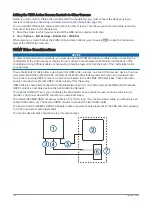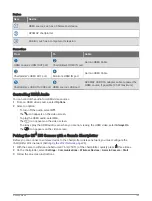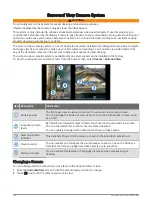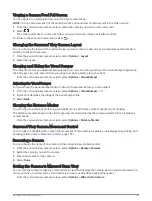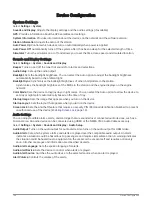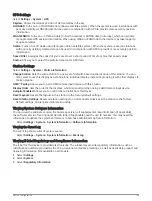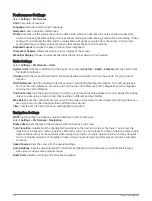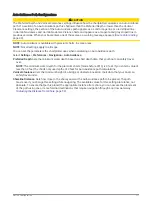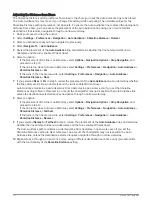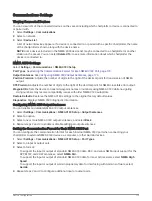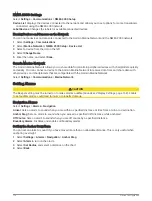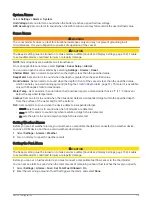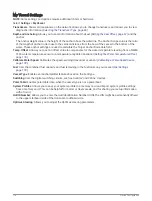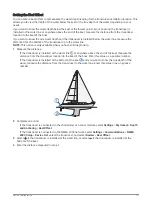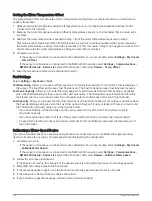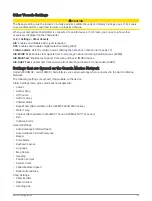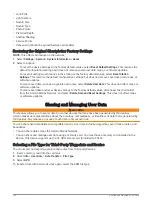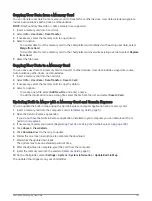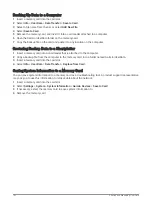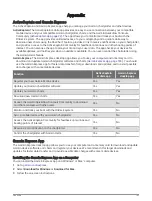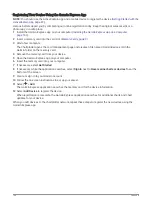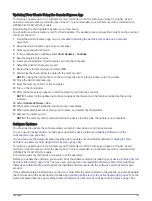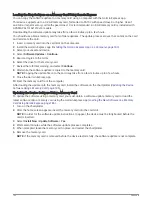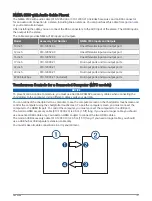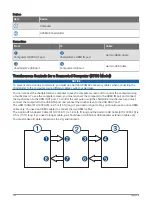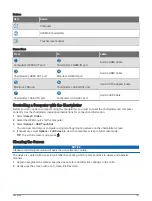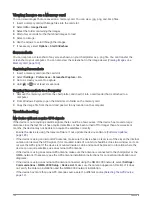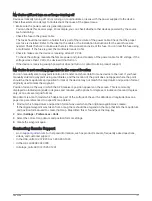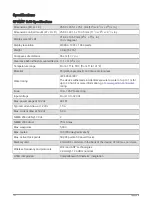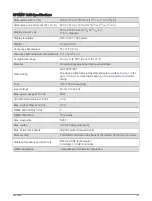
Setting the Water Temperature Offset
The temperature offset compensates for the temperature reading from a temperature sensor or temperature-
capable transducer.
1 Measure the water temperature using the temperature sensor or temperature-capable transducer that is
connected to the network.
2 Measure the water temperature using a different temperature sensor or a thermometer that is known to be
accurate.
3 Subtract the water temperature measured in step 1 from the water temperature measured in step 2.
This value is the temperature offset. Enter this value in step 5 as a positive number if the sensor measures
the water temperature as being colder than it actually is. Enter this value in step 5 as a negative number if the
sensor measures the water temperature as being warmer than it actually is.
4 Complete an action:
• If the sensor or transducer is connected to the chartplotter or a sonar module, select Settings > My Vessel
> Temp. Offset.
• If the sensor or transducer is connected to the NMEA 2000 network, select Settings > Communications >
NMEA 2000 Setup > Device List, select the transducer, and select Review > Temp. Offset.
5 Enter the temperature offset value calculated in step 3.
Fuel Settings
Select Settings > My Vessel > Fuel.
Fuel Remaining: Allows you to use fuel flow sensors or fuel tank level sensors to monitor the fuel remaining on
the vessel. The Fuel Flow option uses fuel flow sensors. The Fuel Tank option uses fuel tank level sensors.
Fuel Tank Capacity: Allows you to enter the fuel capacity of each fuel tank onboard. This setting is available
when the Fuel Remaining setting is set to the Fuel Tank option. The chartplotter uses information from the
tank level sensors, so you do not need to do manually enter fuel information after you fill up the tanks.
Fuel Capacity: Allows you to enter the total fuel capacity of all fuel tanks onboard. This setting is available when
the Fuel Remaining setting is set to the Fuel Flow option. After you fill up your tanks with fuel, you must enter
fuel information manually using one of the options below.
• If you have filled up all the fuel tanks on the vessel, select Fill Up All Tanks. The fuel level is set to
maximum capacity.
• If you have added less than a full tank of fuel, select Add Fuel to Boat, and enter the amount added.
• To specify the total fuel in the vessel tanks, select Set Total Fuel Onboard, and enter the total amount of
fuel in the tanks.
Calibrating a Water-Speed Device
If you have a speed sensor or a speed-sensing transducer connected, you can calibrate that speed-sensing
device to improve the accuracy of water-speed data displayed by the chartplotter.
1 Complete an action:
• If the sensor or transducer is connected to the chartplotter or a sonar module, select Settings > My Vessel
> Calibrate Water Speed.
• If the sensor or transducer is connected to the NMEA 2000 network, select Settings > Communications >
NMEA 2000 Setup > Device List, select the transducer, and select Review > Calibrate Water Speed.
2 Follow the on-screen instructions.
If the boat is not moving fast enough or the speed sensor is not registering a speed, a message appears.
3 Select OK, and safely increase the boat speed.
4 If the message appears again, stop the boat, and ensure the speed-sensor wheel is not stuck.
5 If the wheel turns freely, check the cable connections.
6 If you continue to get the message, contact Garmin product support.
178
Device Configuration
Содержание GPSMAP 86 Series
Страница 1: ...GPSMAP 84XX 86XX 87XX Owner sManual...
Страница 12: ......
Страница 217: ......
Страница 218: ...support garmin com GUID 25CCEC48 337E 47C0 8B89 5C35CCDB65AC v22 September 2022...

